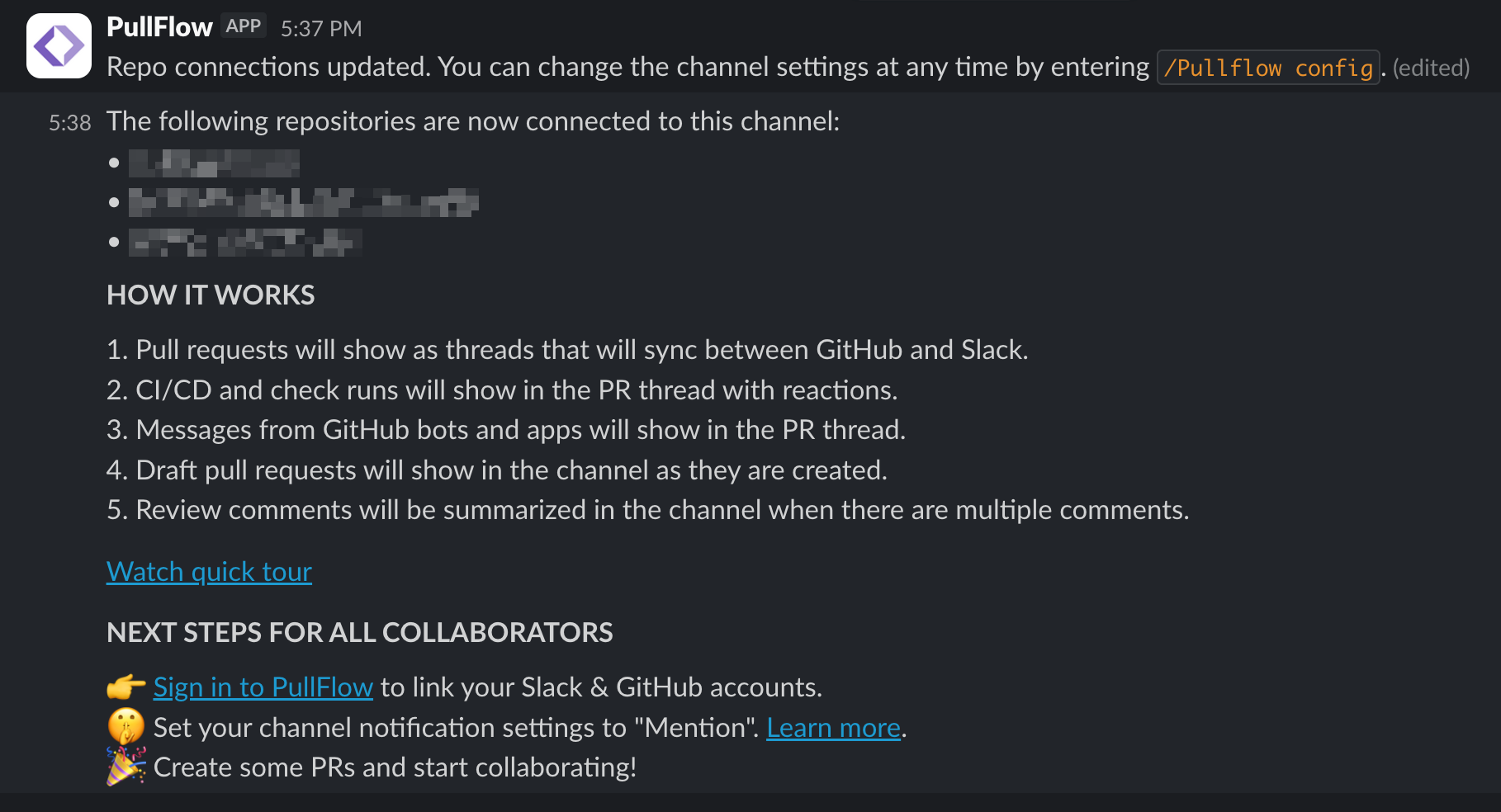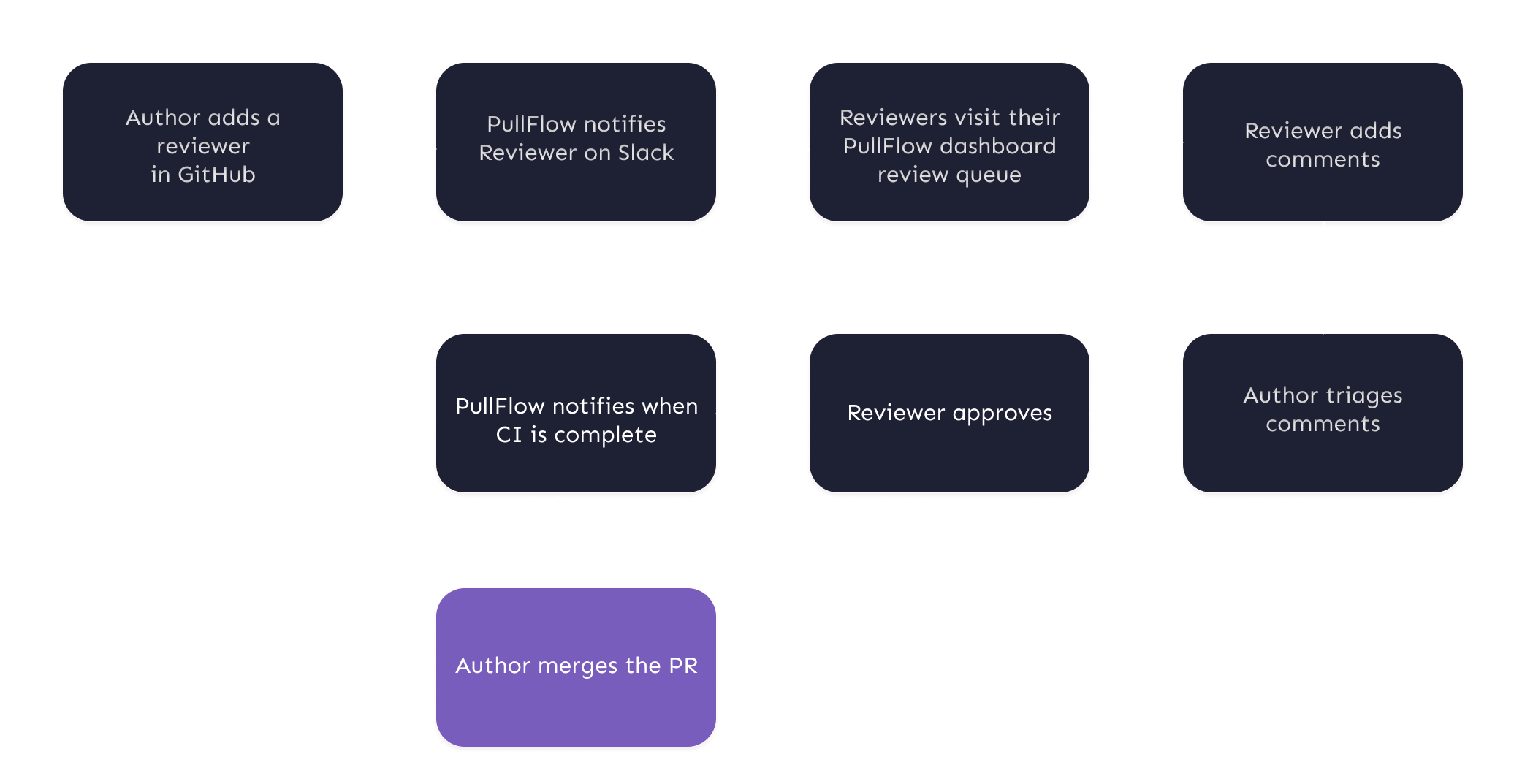Vault.fm
Music PlatformReinventing Code Review: How Vault.fm Eliminated Major Outages with PullFlow

How a music platform transformed code reviews from fast approvals to meaningful discussions that prevent outages
Vault.fm gives control back to music artists by empowering them to build authentic, direct relationships with fans and cut through the noise of the algorithm. With a tight-knit team of 5 engineers, they needed a code review process that made reliability a daily habit. Since introducing PullFlow, the Vault engineering team has been able to maintain velocity while remaining incident-free for 110+ days, allowing them to focus on building tools artists can trust.
The Starting Point
The Vault team began with a straightforward but clunky workflow. Engineers would create pull requests in GitHub, copy-paste links into their main Slack engineering channel, and get quick reviews. As they iterated, this approach presented some challenges around organization and communication.
Key Challenges:
• Engineering channel overwhelmed by PR notifications
• Wasted effort reviewing already-merged PRs
• Insufficient time for thorough reviews
• Slow async discussions via GitHub email
• Poor visibility into review status
Like many fast-moving teams, speed is the top priority, and thus the Vault team recognized an opportunity to evolve their process. Previously limited by Github's email notifications, attempts at thorough discussion took too long, so they either happened in Slack or not at all. Additionally, as Confrey noted, code reviews were going in too quickly, without affording reviewers the opportunity to weigh in on code extensibility and maintainability.
Our engineering channel was completely consumed by code reviews, which was a major problem. The signal that prompted me to look for a solution was clicking to review a PR only to find it was already reviewed and merged.

The Journey of Finding PullFlow
After evaluating different solutions and even considering building in-house, Confrey discovered PullFlow. What stood out wasn't just another code review tool - it was the ergonomics and Slack-first approach.
With Slack as their daily communication hub, having reviews happen in their primary tool was essential. Further, unlike solo-developer projects, PullFlow felt like a true product with a committed team behind it, offering an exciting roadmap and ongoing support.
The onboarding process was seamless - a three-step setup with Slack sign-in and instructions delivered directly into Slack.

The Vault team pinned PullFlow's automated slack connection message to their code review channel for ease of onboarding
Transformation Timeline
The implementation began with CTO Emilee Confrey conducting initial experimentation to validate PullFlow's capabilities. This evolved into a selective pilot program with key team members to test real-world integration. Within one month, the entire engineering team had officially adopted PullFlow, achieving both technical improvements and cultural transformation in their code review process.
April 5
Experimentation
April 22
Piloting
May 1
Adoption
The Immediate Impact
PullFlow transformed everything. In just 2 months, the frequency of high severity incidents per month halted to 0. We're now having the critical conversations that were missing before, and our code quality has improved dramatically.

Dedicated Review Channel
The Vault Engineering team now has a separate channel for all code reviews, freeing up their main engineering channel for more technical deep dives and sharing best practices. The automatic tagging process of reviewers and displaying PR statuses allows the Vault team full visibility into their workflows.
Velocity Over Speed
Since introducing PullFlow, the Vault engineering team has begun moving fast with intention. PR throughput grew 35% without adding headcount, and more importantly, work began to flow through the process predictably.
In a startup context, it is easy to mistake speed for velocity. Immediate approvals and quick merges feel like progress in the moment, but later unravel into bugs and rework.
 The Vault team deliberately slowed review turnaround time from 10 minutes to 40 minutes. At just 30 minutes per PR review, their new code review workflow simultaneously protects heads down time and fosters thoughtful collaboration.
The Vault team deliberately slowed review turnaround time from 10 minutes to 40 minutes. At just 30 minutes per PR review, their new code review workflow simultaneously protects heads down time and fosters thoughtful collaboration.
Data-Driven Behavior Change
The Vault team discovered that PRs over almost 250 lines took over 4 times longer to review than smaller PRs. This visibility led to a natural shift toward smaller, more manageable pull requests without any mandated policy changes.
Signal vs. Noise
The Vault team now benefits from targeted notifications that reach the right people at the right time. With dedicated channels and intelligent tagging, they've eliminated the noise of broadcasting every PR to the entire engineering team. This has reduced notification fatigue while ensuring that critical reviews from the right experts don't get missed in the shuffle.
PullFlow Features Used:
A Cultural Transformation
The real win wasn't only about speed - it was about meaningful conversations. Code reviews became what they should be: a place for learning, mentorship, and preventing bugs.
Measuring Collaboration Success
As an early adopter of PullFlow's Insights beta feature, the Vault team also gained visibility into their collaboration patterns. The dashboard helped them identify review bottlenecks, track review wait time distributions, and understand which changes require the most discussion. This data-driven approach allows them to continuously refine their process and make improvements along the way to their current workflows.
Beyond the improved platform stability, PullFlow has also driven measurable gains in development velocity. On-call engineers now spend 80% more time on planned work than on firefighting - not because reviews are faster, but because they're catching issues earlier in the process, thereby reducing the need for live debugging and hotfixes.
I can directly correlate PullFlow to our improved system reliability. By transforming our code review process, we've been able to prevent outages that would have happened otherwise.

Looking Ahead
Today, Vault.fm continues to evolve its platform by reimagining new ways for artists to turn Instagram followers into real connections. With PullFlow as their code review foundation to maintain high code quality keeping their platform running smoothly, the Vault engineering team can focus on what matters most: creating meaningful experiences for artists and fans.
Ready to Transform Your Code Review Process?
Join Vault.fm and many other developers using PullFlow